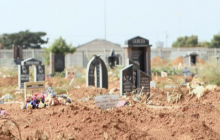Combined Use of Environmental and Artificial Tracers to Characterise the Vadose Zone
Water and contaminant transport processes in the vadose zone through preferential flow paths can be understood using environmental and artificial tracer methods. Further improvement in tracer techniques can be achieved by applying numerical modelling techniques of both water and solute transport, accounting for additional information on water movement and the matric potential of the vadose zone. The vadose zone is often ignored as a key component linking the land surface to the groundwater table, even though it acts as a filter that removes or stores potential contaminants.
